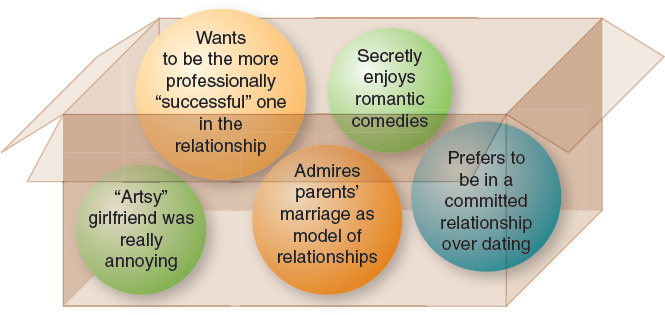Schemas: Organizing Perceptions
As you receive information, you strive to make sense of it. To do so, you consider not only the new information but also how it fits with information you already have. For example, in evaluating Irina, speed dater Adam makes associations with his own relationship experience and his assumptions about assertive women. He compares Irina to his old girlfriend (“artsy”) and to himself, guessing about her professional success. Adam is making sense of the interaction’s many inputs through schemas, mental structures that put together related bits of information (Fiske & Taylor, 1991) (see Figure 2.1). Once put together, these chunks of information form patterns that we use to create meaning. Schemas present various opportunities and challenges as we discuss later.
